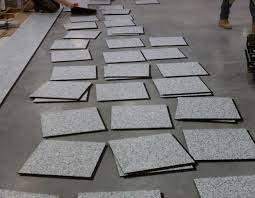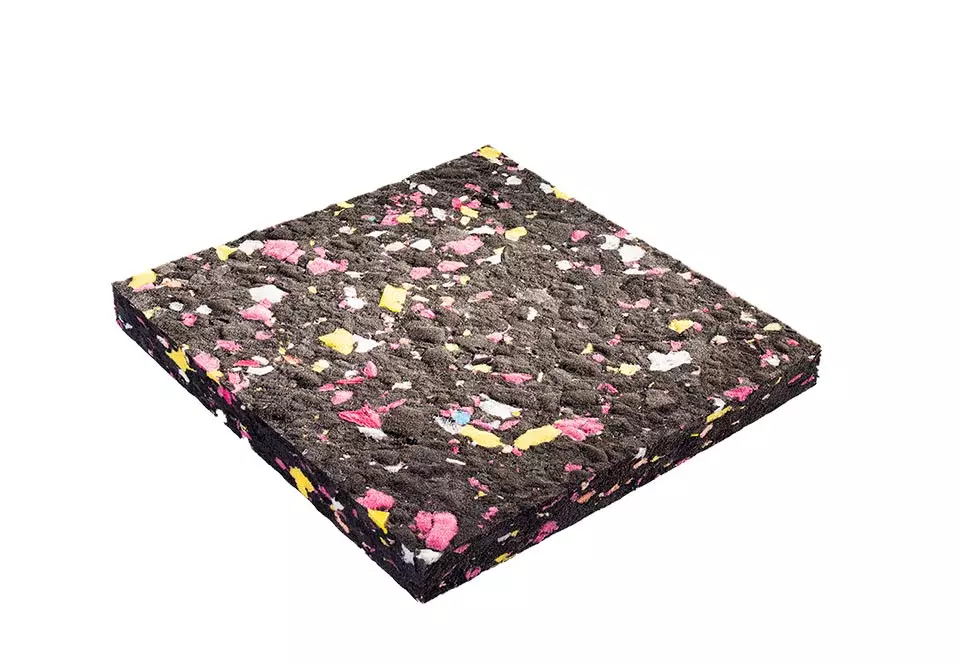ESD Static Dissipative Foam
ESD (electrostatic discharge) static dissipative foam is a type of foam that is designed to prevent static electricity buildup and discharge, which can damage electronic components and equipment. ESD foam is made by combining conductive materials, such as carbon or metal particles, with a base foam material, such as polyurethane. The resulting foam has a resistivity range that allows it to safely dissipate electrostatic charges without generating a spark.




| Product Specification | ||
|---|---|---|
| Product Code | SF908 | |
| Density Available | 70D, 85D, 110D, 165D | |
| Description | Re Bonded Chipped Polyurethane Foam | |
| Application | Used as Mats in Clean Room Applications, Automobile Industry, Auditoriums, Packaging Industry, Mattresses & etc. | |
| Third Party Confirmation | N.A. | |
| Note | Detail Technical Report Available on Request | |
Product Description
ESD foam comes in a variety of forms, including sheets, rolls, and custom-cut inserts. It is also available in different densities and thicknesses, allowing it to be tailored to the specific needs of different applications. ESD foam is typically gray or black in color, which indicates its conductive properties. When using ESD foam, it is important to properly ground the foam to ensure that any electrostatic charges are safely discharged. This can be done by using conductive tape or grounding straps that connect the foam to a grounded surface. Overall, ESD static dissipative foam is an essential material for protecting sensitive electronic equipment and components from electrostatic discharge. Its ability to safely dissipate static electricity helps prevent damage and ensure the reliable operation of critical systems.
ESD Static Dissipative Foam Characteristics
ESD static dissipative foam is a specialized foam material that has been engineered to prevent electrostatic discharge (ESD) from damaging electronic components and other sensitive materials. This type of foam is designed to have specific characteristics that allow it to safely dissipate static charges, protect against electrostatic discharge, and provide cushioning for delicate items.
Here are some of the key characteristics of ESD static dissipative foam:
Conductivity: ESD foam is made by blending conductive materials into the foam matrix, which creates a conductive path for static charges to dissipate. This conductivity allows for safe handling and transport of sensitive electronics.
Dissipation time: ESD foam has a specific dissipation time, which is the time it takes for static charges to dissipate through the foam. The dissipation time of ESD foam is carefully calibrated to ensure safe handling of sensitive materials.
Cushioning: ESD foam is designed to provide cushioning and protection for delicate items. The foam absorbs shock and vibration, protecting electronics and other fragile items during transport and handling.
Durability: ESD foam is highly durable and resistant to damage. It is able to withstand repeated handling and transport without losing its static dissipative properties.
Customization: ESD foam can be customized to fit specific applications. It can be cut and shaped to fit individual products, and can also be made in different densities and thicknesses to provide the required level of cushioning and protection.
Overall, ESD static dissipative foam is an essential material for protecting sensitive electronics and other delicate items from the damaging effects of electrostatic discharge. Its specialized characteristics allow it to safely dissipate static charges while providing cushioning and protection.
ESD Static Dissipative Foam Applications
ESD (electrostatic discharge) static dissipative foam has a wide range of applications in various industries, particularly in the electronics and semiconductor manufacturing industries.
Here are some of the most common applications of ESD static dissipative foam:
Electronic component packaging: ESD foam is commonly used to package and transport electronic components, such as microchips and circuit boards, to protect them from electrostatic discharge and physical damage during transit.
Workstation mats and flooring: ESD foam is often used as a cushioned mat or flooring material in areas where sensitive electronic equipment is handled, to provide a safe, static-free working environment for workers.
Shipping and handling trays: ESD foam trays can be custom-made to fit specific electronic components and are used for shipping and handling of fragile items such as semiconductors, integrated circuits, and LCD panels.
Cleanroom equipment: ESD foam can be used in the manufacturing of cleanroom equipment such as benches, shelves, and storage racks to prevent the buildup of static electricity that can harm sensitive electronic components.
Medical device packaging: ESD foam is used in the packaging of medical devices, such as pacemakers and implantable sensors, to protect them from damage caused by electrostatic discharge.
Aerospace and automotive industry: ESD foam is used in the aerospace and automotive industries to protect electronic systems and components from ESD events during transportation, assembly, and storage.
Overall, ESD static dissipative foam is a critical material in many industries, providing essential protection against electrostatic discharge and ensuring the reliability and longevity of electronic systems and components.
FAQ's
Static dissipaters are devices or materials designed to safely and effectively dissipate static electricity or electrostatic charge, reducing the risk of sparks and electrostatic discharge (ESD) in various applications.
Static dissipaters are crucial in preventing damage to sensitive electronic components and protecting against hazards in explosive or flammable environments. They help ensure safe and reliable operation in industries like electronics manufacturing and chemical processing.
Static dissipaters work by providing a controlled path for static electricity to discharge into the surrounding environment, thus preventing the buildup of potentially damaging electrostatic charges on surfaces and equipment.
Static dissipaters are used in various settings, including electronics assembly, semiconductor manufacturing, cleanrooms, fuel storage facilities, and areas where flammable gases or dust are present. They are also used in air and watercraft to prevent electrical discharges.
Yes, static dissipaters can be customized to meet specific application requirements. The choice of the right type and design of static dissipater depends on factors such as the level of electrostatic charge, environmental conditions, and safety standards applicable to the specific setting.



